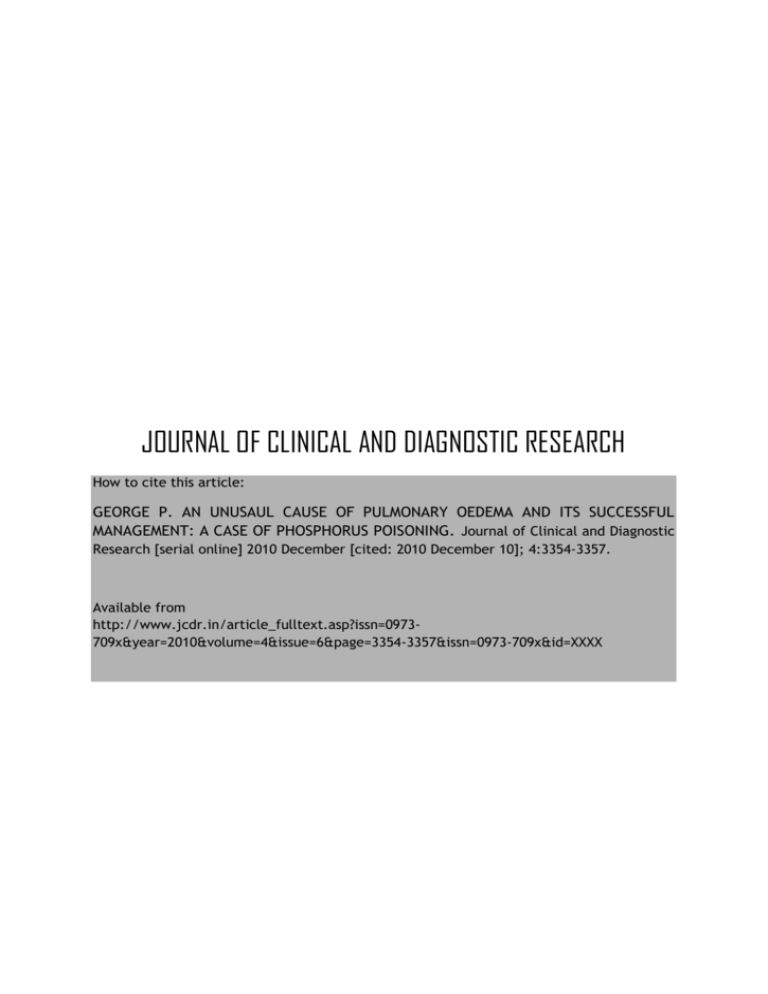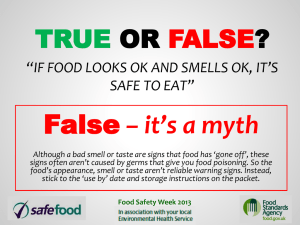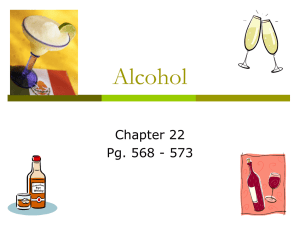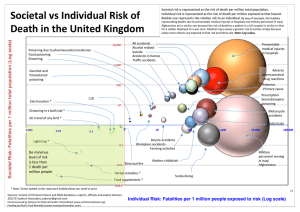JOURNAL OF CLINICAL AND DIAGNOSTIC RESEARCH
advertisement

JOURNAL OF CLINICAL AND DIAGNOSTIC RESEARCH How to cite this article: GEORGE P. AN UNUSAUL CAUSE OF PULMONARY OEDEMA AND ITS SUCCESSFUL MANAGEMENT: A CASE OF PHOSPHORUS POISONING. Journal of Clinical and Diagnostic Research [serial online] 2010 December [cited: 2010 December 10]; 4:3354-3357. Available from http://www.jcdr.in/article_fulltext.asp?issn=0973709x&year=2010&volume=4&issue=6&page=3354-3357&issn=0973-709x&id=XXXX P George, Acute phosphorus poisoning CASE REPORT An Unusual Cause Of Pulmonary Oedema And Its Successful Management: A Case Of Phosphorus Poisoning PETER GEORGE* ABSTRACT: Acute phosphorus poisoning is a grave clinical situation because of its toxicity and multiple system effects. The absence of a specific antidote makes the associated fatalities very high. In this report, a 22 year old woman presented with the clinical and radiological features which were characteristic of acute pulmonary oedema, after the consumption of phosphorus paste as a suicidal attempt. The initial echocardiography showed low ejection fractions and with aggressive haemodynamic monitoring and ionotropic support, she recovered within 48 hours of admission. KEYWORDS: Phosphorus poisoning, acute pulmonary oedema, phosgene KEYMESSAGES: In this report we like to highlight the importance of close hemodynamic monitoring and intensive care in the management of phosphorus poisoning. This patient had clinical and radiological features of acute pulmonary oedema at the time of admission and she completely recovered in 48 hours. ____________________________ *MD, Department of Medicine, Fr Muller Medical College, Mangalore, India Address for correspondence: Dr Peter George MD, Associate Professor, Department of Medicine, Yenepoya Medical College, University Road, Mangalore - 575018, Karnataka, India; E-mail: drpetergeorge2002@yahoo.com , Phone: +91 9845177660, +91 824 2204670, Fax: +91 824 2204667. INTRODUCTION managed with aggressive haemodynamic monitoring and supportive care. In South India, acute phosphorus poisoning is not as common as other chemical poisonings. But, with an increase in the incidence of phosphorus poisoning, health workers should possibly educate the public on the fatalities which are associated with toxic rodenticides. Acute poisoning is commonly encountered in the emergency department. Phosphorus, which is marketed in the form of a paste, is a very effective and popular rodenticide, because of its easy availability and affordability. Non availability of an effective antidote and its high toxicity, makes the treatment challenging. The mortality is high due to an increased incidence of heart failure, pulmonary oedema and hepatic failure. In this report, we present a young lady with acute pulmonary oedema after the consumption of phosphorus paste. She was successfully 3554 CASE REPORT A 22 year old female in respiratory distress, was referred to our hospital for assisted ventilation. She was alleged to have consumed Journal of Clinical and Diagnostic Research. 2010 December;(4):3554-3557 P George, Acute phosphorus poisoning 20 grams of rodenticide paste (3% phosphorus – brand name Ratol) on the previous day. She was complaining of breathlessness, upper abdominal pain and tightness in chest at the time of admission to the hospital. In the past, she did not have any symptoms of cardiac or respiratory diseases. On examination, she was found to be anxious, had tachycardia (heart rate: 110/min), tachypnea (respiratory rate: 26/min), hypotension (Blood pressure: 90/60 mm of Hg) and elevated JVP (7 cm) and her cardio-respiratory systems had bibasilar crepitations with a gallop rhythm. Her investigations: total counts were 9,400/ mm3 (with 68 % neutrophils), platelets were 220,000 / mm3, PCV was 45%; renal and liver function tests and electrolytes were normal. [Table/Fig 1]: Chest X ray done at the time of admission showing bilateral peri hilar fluffy shadowing suggestive of pulmonary oedema hypokinesia with low ejection fraction (15 %) and there were no valvular or structural abnormalities. With the clinical symptoms and signs and investigations, she was concluded to have acute biventricular heart failure with pulmonary oedema. She was kept on close cardiac and central venous pressure monitoring. She maintained the oxygen saturation (SPO2>95%), systolic blood pressure (>90mm of Hg) and urine output (>60ml/hour) over the next 24 hours. She was asymptomatic from 24 hours of admission and was taken off all the supportive medications except oxygen. She was frequently monitored for dyselectrolytaemia and arterial blood gases, which were normal. Throughout the stay in hospital, her urine output was more than 60 ml/hour. The repeat chest roentgenograms done at 12, 24 and 36 hours since admission showed the clearance of opacities. The echocardiogram which was repeated at 36 hours, showed a normal ejection fraction and all the chambers were contracting normally. The chest roentgenogram which was done at 48 hours [Table/Fig 2] from admission was normal. [Table/Fig 2]: Normal chest X ray after 48 hours of admission Her chest roentgenogram [Table/Fig 1] showed bilateral fluffy shadows which were suggestive of pulmonary oedema / adult respiratory distress syndrome / bronchopneumonia. The ECG which was done, traced ST-T changes in the chest leads, thus suggesting a strain pattern. Her arterial blood gases showed compensated metabolic acidosis. After collecting the blood and urine samples for culture sensitivity; the patient was started on empirical broad spectrum antibiotics, oxygen by mask, dobutamine plus dopamine infusion and other supportive measures. In view of the chest roentgenogram and the ECG findings, a bedside echocardiogram was done. Echocardiography showed global 3555 DISCUSSION Phosphorus poisoning is common in developing countries, as it is highly toxic, Journal of Clinical and Diagnostic Research. 2010 December;(4):3554-3557 P George, Acute phosphorus poisoning cheap and easily accessible. When phosphorus mixes with fluids in the stomach, phosphine gas (PH 3) is released. Phosphine is rapidly absorbed, thus causing systemic poisoning by the inhibition of oxidative phosphorylation, resulting in cellular hypoxia. The release of the cytotoxic phosphine gas primarily affects the heart, lungs, the gastrointestinal tract and the kidneys, although all organs can be involved. Phosphine results in oxidative stress by the induction of free radicals and catalase inhibition [1],[2]. This gas, which is a very toxic systemic poison, is extremely dangerous due to the lack of a specific antidote. Acute phosphorus poisoning is a medical emergency, demanding early and adequate management, as it involves multiple systems. In spite of the progress in the fields of toxicology, critical care and life support, acute aluminium phosphorus poisoning is associated with high mortality [3]. The patient survival is low if the ingestion is more than 1.5 grams [4]. The diagnosis is made by clinical suspicion, the silver nitrate test and the biochemical examination of the gastric aspirate and the viscera. The silver nitrate-impregnated strips immersed in a sample of gastric fluid for 20 minutes, darken in the presence of PH 3 and can be used as a handy tool to identify aluminium phosphide. A study was done by Louriz M et al [5] in Morocco on 50 patients with acute aluminium poisoning, over a period of 15 years, to determine its clinical characteristics and severity. Shock and electrocardiographical abnormalities were seen in 42.6% and 57% of the cases respectively. The mortality rate which was observed was 49% and it correlated with the presence of shock and altered consciousness. The mechanism of shock is unclear; and at present, the available clinical, biological and electrical observations suggest a myocardial damage resulting in haemodynamic failure. The myocardial biopsies which were taken in a few studies, showed the features of myocardial vacuolation and necrosis. The pulmonary oedema which was associated with poisoning is either cardiogenic due to myocardial failure or/ and non cardiogenic due to direct alveolar damage. This is possibly due to the direct hypoxic injury which is caused by phosgene 3556 on the myocardium [5],[6],[7]. In the review of literature, the frequency of hypotension and shock varied from 76% to 100% [7],[8]. The hypovolumia associated vomiting in acute poisoning could also contribute to the hypotension. The electrocardiographical abnormalities which are commonly encountered in phosphorus poisoning are conduction blocks and arrhythmias [6],[7],[8]. The commonest abnormalities are bundle branch blocks, atrioventricular blocks, atrial fibrillation, junctional rhythm, ventricular and atrial extrasystoles, ventricular tachycardia and rarely, sinoatrial blocks. Re-polarization abnormalities like ST segment depression, ST segment elevation and T wave inversion are also noted. In the present case, ST –T changes were observed. Echocardiography revealed global hypokinesia in many reports [7],[8],[9] and these are reversible if appropriately managed, as was seen in the present case. The management of phosphorus poisoning is symptomatic and supportive. This consists of early gastric lavage, oxygenation, adequate fluids and vasopressors, assisted ventilation and other supportive care. There are reports of magnesium sulphate being used as an antidote, primarily because of its membrane stabilising ability which prevents cardiac condution abnormalities. Specific therapy with intravenous magnesium sulphate is recommended [10]. The effects of phosphorus on the other systems are also grave. Neurological toxicity of aluminum phosphide results in clinical effects like headache, stupor, restlessness, agitation, anxiety, ataxia, paresthaesia and central nervous system depression, leading to coma and seizures. It can cause acute hepatic toxicity which progresses to fulminant failure and it can also result in adult respiratory distress syndrome. In this report, we would like to highlight the importance of close haemodynamic monitoring and intensive care in the management of phosphorus poisoning. This patient had clinical and radiological features of acute pulmonary oedema at the time of admission and she completely recovered in 48 hours. Journal of Clinical and Diagnostic Research. 2010 December;(4):3554-3557 P George, Acute phosphorus poisoning REFERENCES [1] Gupta S, Ahlawat SK. Aluminum phosphide poisoning: A review. J Toxicol Clin Toxicol 1995; 33:19-24. [2] Proudfoot AT. Aluminum and Zinc phosphide poisoning. Cli Toxicol 2009; 47:89-100. [3] Singh S, Singh D, Wig N, Jit I, Sharma BK. Aluminum phosphide ingestion: A clinicopathologic study. J Toxicol Clin Toxicol 1996; 34:703-6. [4] Akkaoui M, Achour S, Abidi K, Himdi B, Madani N, Zeggwagh AA, Abouqal R. Reversible myocardial injury associated with aluminum phosphide poisoning. Clin Toxicol 2007;45;72831. [5] Louriz M, Dendane T, Abidi K, Madani N, Abouqal R, Zeggwagh AA. Prognostic factors of acute aluminum phosphide poisoning. Indian J Med Sci 2009; 63:227-34. [6] Chugh SN, Chugh K, Ram S, Malhotra KC. Electrocardiographic abnormalities in aluminum phosphide poisoning with special reference to its incidence, pathogenesis, 3557 mortality and histopathology. J Indian Med Assoc 1991; 89:32-5. [7] Shah V, Baxi S, Vyas T. Severe myocardial depression in a patient with aluminium phosphide poisoning: A clinical, electrocardiographical and histopathological correlation. Indian J Crit Care Med. 2009; 13(1):41-3. [8] Singh RB, Rastogi SS, Singh DS. Cardiovascular manifestations of aluminum phosphide intoxication. J Assoc Physicians India 1989; 37:590-2. [9] Siddaiah L, Adhyapak S, Jaydev S, Shetty G, Varghese K, Patil C. Intra-aortic balloon pump in toxic myocarditis due to aluminum phosphide poisoning. J Med Toxicol 2009; 5:80-3. [10] Chugh SN, Kumar P, Aggarwal HK, Sharma A, Mahajan SK, Malhotra KC. Efficacy of magnesium sulphate in aluminium phosphide poisoning: Comparison of two different doses schedules. J Assoc Physicians India 1994; 42:373-5. Journal of Clinical and Diagnostic Research. 2010 December;(4):3554-3557







